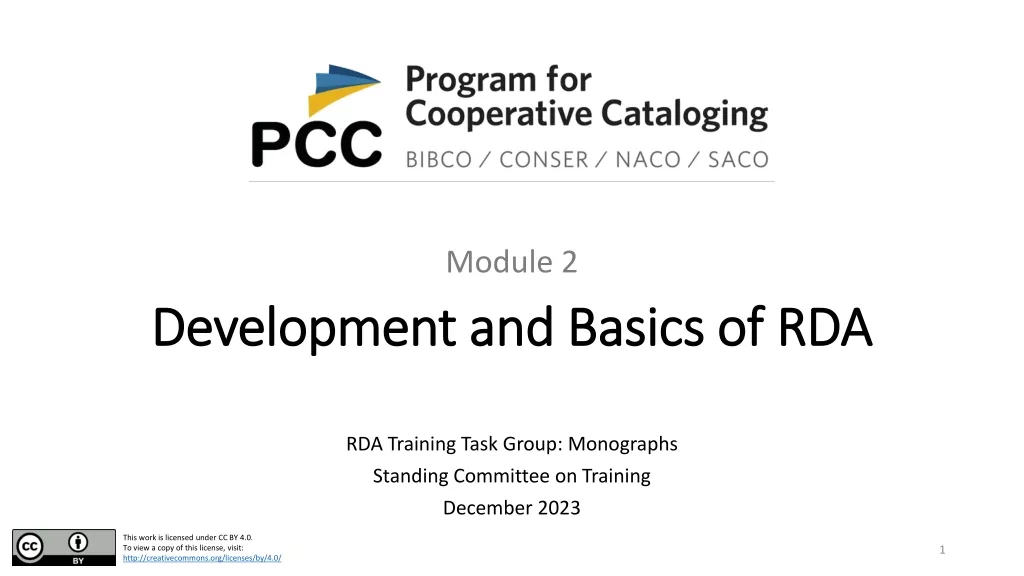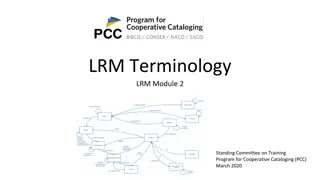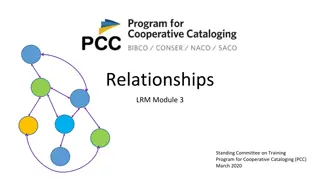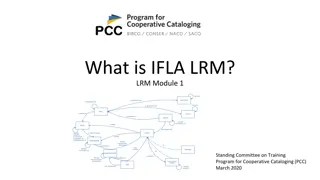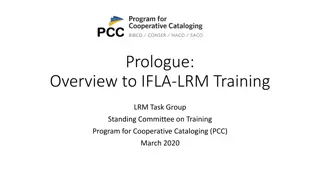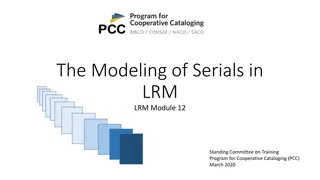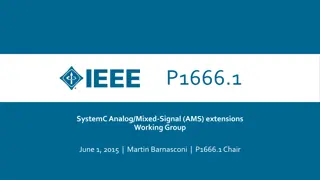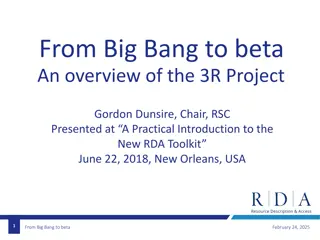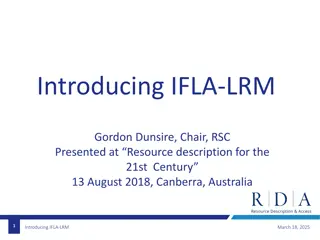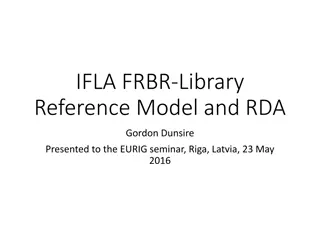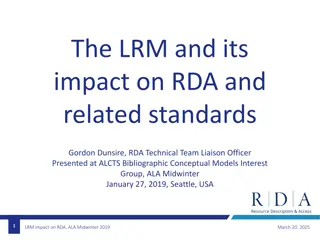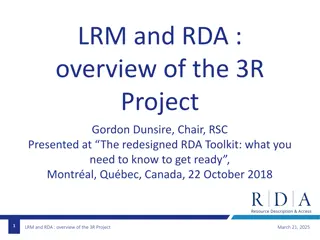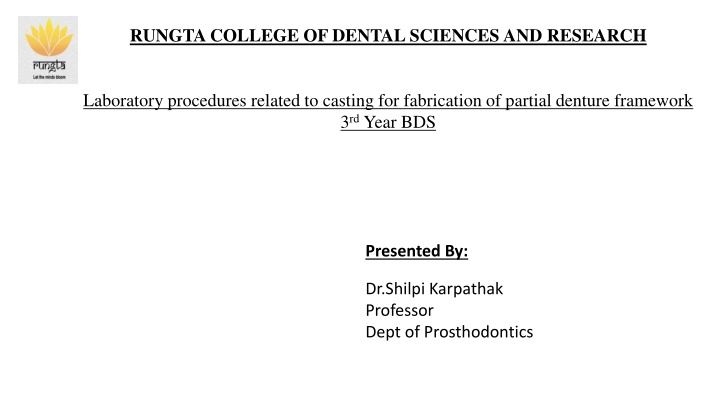
Casting Procedures for Partial Denture Framework Fabrication
Explore laboratory procedures related to casting for the fabrication of partial denture frameworks. Learn about important steps like re-tripoding the master cast and determining heights of contour for precise framework fabrication.
Download Presentation

Please find below an Image/Link to download the presentation.
The content on the website is provided AS IS for your information and personal use only. It may not be sold, licensed, or shared on other websites without obtaining consent from the author. If you encounter any issues during the download, it is possible that the publisher has removed the file from their server.
You are allowed to download the files provided on this website for personal or commercial use, subject to the condition that they are used lawfully. All files are the property of their respective owners.
The content on the website is provided AS IS for your information and personal use only. It may not be sold, licensed, or shared on other websites without obtaining consent from the author.
E N D
Presentation Transcript
RUNGTA COLLEGE OF DENTAL SCIENCES AND RESEARCH Laboratory procedures related to casting for fabrication of partial denture framework 3rd Year BDS Presented By: Dr.Shilpi Karpathak Professor Dept of Prosthodontics
Specific Learning Objective Core areas Domain Category Introduction Cognitive Must Know Dentist-Laboratory Relations Training of Laboratory Technicians Registration of Laboratories Work Authorizations Design of written work authorizations Infection Control for the Dental Laboratory Laboratory Procedures Cognitive Must Know Summary Affective Must Know
Contents Dentist-Laboratory Relations Training of Laboratory Technicians Registration of Laboratories Work Authorizations Design of written work authorizations Infection Control for the Dental Laboratory Laboratory Procedures Retripoding the master cast Heights of contour
Re-tripoding the master cast During the survey and design process, the clinician determines a specific path of insertion and removal for the partial denture. This path is recorded by placing tripod marks on the diagnostic cast. In turn, the clinician prepares both hard and soft tissues of the mouth in harmony with this path. The technician must ensure that all framework fabrication steps are based upon this path of insertion and removal.
Tripodization is accomplished by placing three easily identifiable marks on the same horizontal plane. These marks must be widely separated and must be positioned on anatomic portions of the diagnostic cast. Because these marks define a single horizontal plane, they allow rapid orientation and reorientation of the diagnostic cast. Transfer of these marks also permits orientation of the master cast. This allows the technician to position the diagnostic and master casts in the same spatial orientation, thereby reproducing the prescribed path of insertion and removal.
Heights of contour With the master cast properly oriented on the survey table, the technician uses a dental surveyor and carbon marker to indicate the heights of contour for the teeth and soft tissues. The technician must ensure that the carbon marker remains in contact with the master cast throughout the process. This results in the transfer of distinct black survey lines to the master cast. These lines represent the heights of contour at the selected orientation
Design transfer Without removing the master cast from the survey table or changing the tilt, the technician transfers the design from the diagnostic cast to the master cast. Areas of special consideration, such as undercut depths for retentive clasp arms, gauges of wrought-wire clasps, cast clasps pattern sizes, and other critical items should be transferred to the master cast with extreme care and clearly marked to avoid confusion
Block out and relief Blocking out is the act of placing wax and other materials into undesirable undercuts on the master cast. Since the framework is waxed and cast on a duplicate of the master cast, undercuts that would prohibit the framework from going into place must be eliminated.
Cast preparation Beading is the act of scraping the outline of the major connector into the master cast. The bead line is approximately 0.5 mm deep and becomes less distinct as it approaches the gingival margins. The bead line produces a raised edge at the border of the major connector and ensures positive contact of the major connector with the palatal tissues. This feature reduces packing of food beneath the major connector. Bead lines are not used in conjunction with mandibular major connectors because these connectors rest on thin gingival tissues that cannot tolerate the associated pressures
Before further progress is made, the master cast must be treated with a surface sealer. The sealer is a mixture of acetone, diethyl phthalate, and cellulose acetate. The material provides an almost imperceptible film that protects the design throughout the block-out and duplication processes
Block-out technique Block-out wax can be purchased as a commercially prepared product or it can be mixed to the technician s personal preference by using a combination of common dental waxes. Most formulas employ a mixture of hard baseplate wax, gutta percha, sticky wax, and a colorant for visual contrast against the dental cast. Block-out wax is normally kept fluid in an electrically heated pot. The molten wax can be applied to the dental cast using a spatula. Wax is placed apical to the height of
Surface sealer may be applied using a brush or an aerosol spray. In either case, application should be performed in a fume hood or in front of a suction vent. Careful application is required to prevent a buildup of material, which could create false contours and affect the accuracy of the associated prosthesis. Following application of sealer, the cast must be allowed to dry for a minimum of 5 minutes.
Block-out wax then may be applied to the cast. contour and is not applied in areas where intimate metal contact is desired. Wax that is inadvertently positioned occlusal or incisal to the height of contour must be removed, or it will add to the dimension of the refractory cast and result in a poorly fitting framework. During this stage of the procedure, a slight excess of block-out wax is placed into all undercut areas. In turn, definitive shaping of the block-out wax can begin.
Tapered versus parallel blockout Block-out wax is contoured in a predetermined relation to the prescribed path of insertion. Excess wax is removed with a metallic block-out instrument mounted in the dental surveyor. Normally the surface of the block-out instrument is held perpendicular to the surveyor base. This results in a 0-degree block-out (ie, a block-out that is parallel to the path of insertion). Other blades are available and offer block-outs that range from 2 to 6 degrees from the path of insertion
The decision to block out the undercuts exactly parallel to the path of placement or to allow some degree of taper is a clinical one and should be determined by the dentist. All tooth-supported removable partial dentures should be blocked out parallel to the path of insertion. Tooth-tissue supported removable partial dentures may be blocked out in a similar manner, or they may be given a tapered block-out to allow increased freedom of movement in function. Personal design philosophy generally determines the degree of block- out
Contouring the block-out wax With the block-out instrument properly positioned, excess wax is carefully removed until the entire undercut area has been shaped. Block-out tools may be electrically heated or warmed over a flame. The use of a warm instrument makes the contouring process easier and more efficient. Areas associated with retentive clasp tips are critical to the success of the prosthesis and warrant special consideration. Block-out wax can be shaped with hand instruments to provide a slight ledge just apical to the clasp terminus . This ledge guides the placement of the wax or plastic pattern and ensures that the clasp tip is accurately positioned in the desired undercut. In some instances, mechanical undercuts may be present where the body and shoulder of the clasp arm are to be placed.
Since only the terminal third of the retentive clasp arm should be placed into an undercut, the body and shoulder areas commonly require block- out. An example is seen at the mesio buccal surface of the maxillary right second molar in. Appropriate block-out permits placement of the clasp. Failure to accomplish this represents a compromise in removable partial denture design and construction. The clinician is responsible for evaluating tooth contours prior to master cast submission and should ensure the adequacy of mouth preparation procedures
Sprue guide placement Some removable partial denture alloys are sprued with an overjet sprue former and reservoir.This technique requires the placement of a small tapered cylinder on the master cast.This cylinder may be made from wax, plastic, or metal and must be placed in the exact position that the main sprue will occupy on the refractory cast (Fig 11-19). Placement of the overjet sprue former is a laboratory procedure and is governed by recommendations from the company that markets the alloy.
Duplication Blockout philosophies and techniques are similar regardless of the chosen alloy. In contrast, duplication materials and techniques are alloy specific. As a result, each step is critical and must be followed exactly because refractory cast expansion determines the ultimate fit of the framework. For example, low-heat alloys are used with gypsum bound refractory materials. In these situations, reversible hydrocolloid with a water base is used for the impression to create the refractory cast. On the other hand, high-heat alloys use phosphate-bound investments and glycerin based colloids for duplication.
Impression To make the impression, a blocked-out master cast is placed on the base of a duplicating flask . The flask is assembled , and a steady stream of reversible hydrocolloid is poured into the flask. Once filled, the flask is placed in a regulated cooling tank . Up to an hour may be required to fully set the colloid. The flask is then disassembled. The master cast is carefully removed with the aid of two knife blades engaging the sides of the cast. Alternatively, the master cast may be removed by directing compressed air at the cast colloid junction. In either instance, removal of the master cast must be followed by careful examination of the colloid impression
Duplicating colloids can be reused repeatedly. Most laboratories have special equipment to remelt and store the colloid. Colloids also can be prepared with less sophisticated equipment. To employ such techniques, clean colloid is cut into small pieces and heated in a double boiler until the material reaches a fluid consistency.
Summary During the survey and design process, the clinician determines a specific path of insertion and removal for the partial denture. This path is recorded by placing tripod marks on the diagnostic cast. In turn, the clinician prepares both hard and soft tissues of the mouth in harmony with this path. The technician must ensure that all framework fabrication steps are based upon this path of insertion and removal.
References Stewert s Clinical Removable Partial Prosthodontics, 4th Edition Textbook of Prosthodontics, V.Rangarajan 2nd Edition


